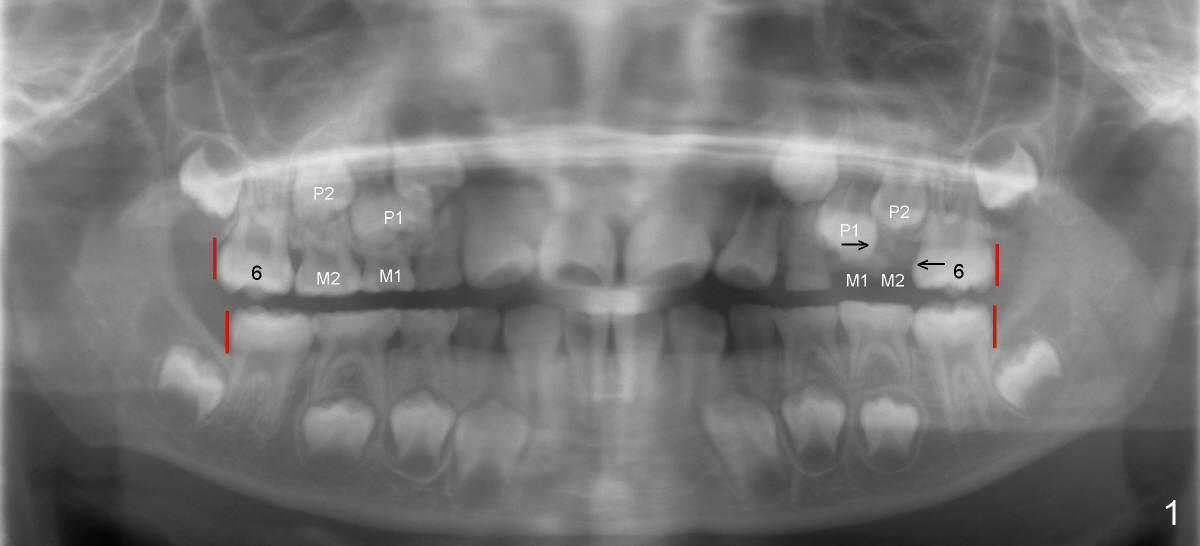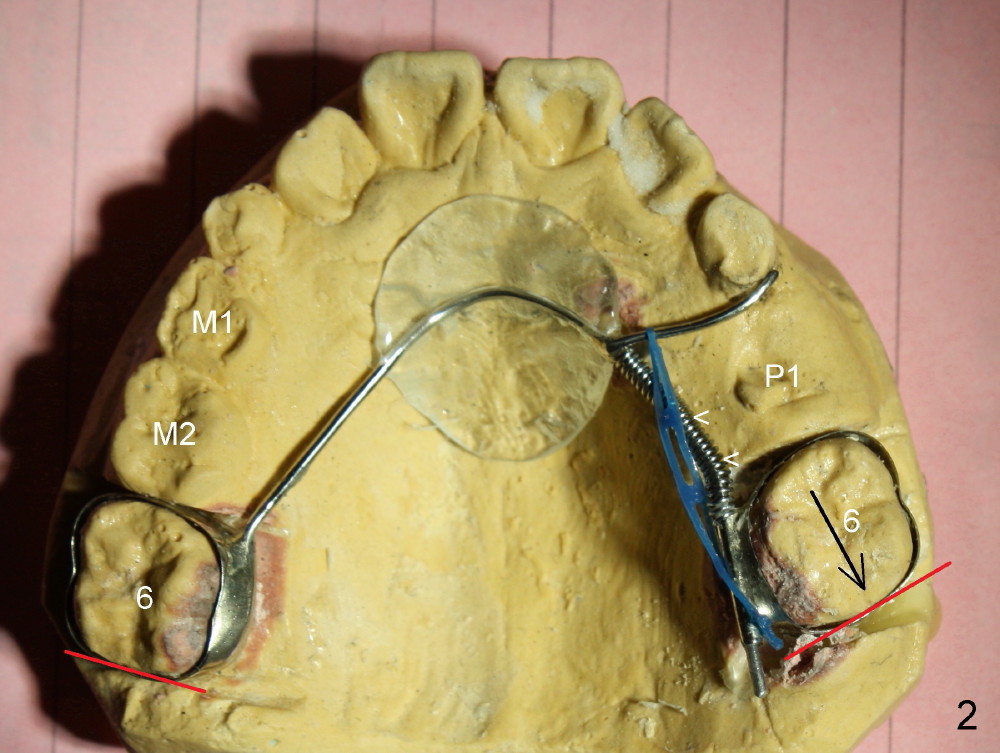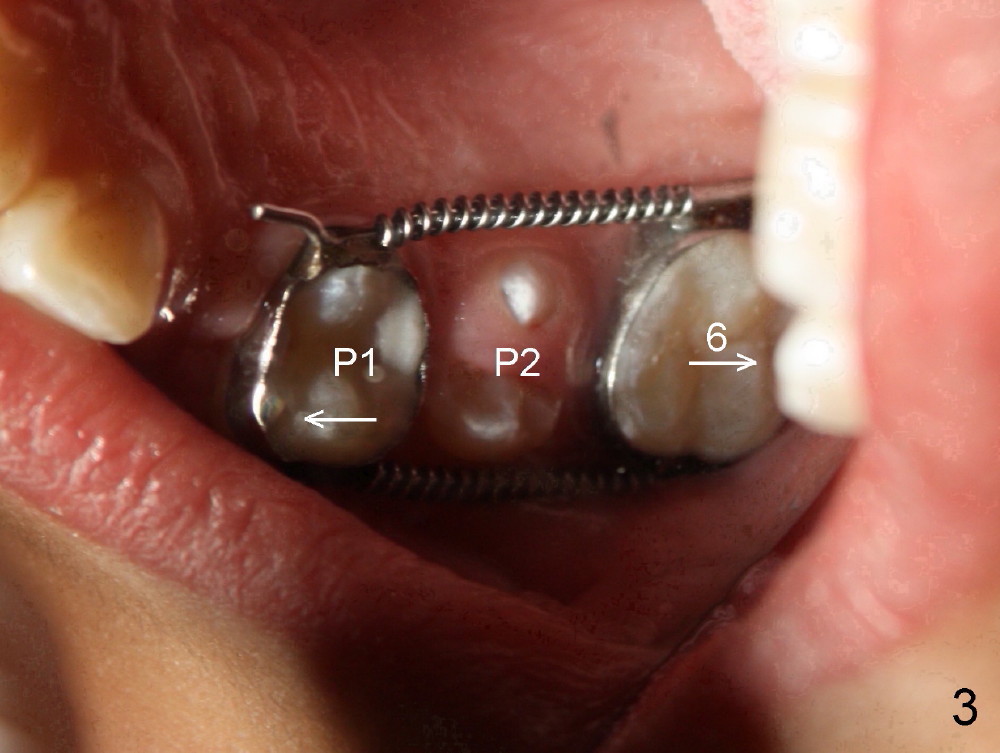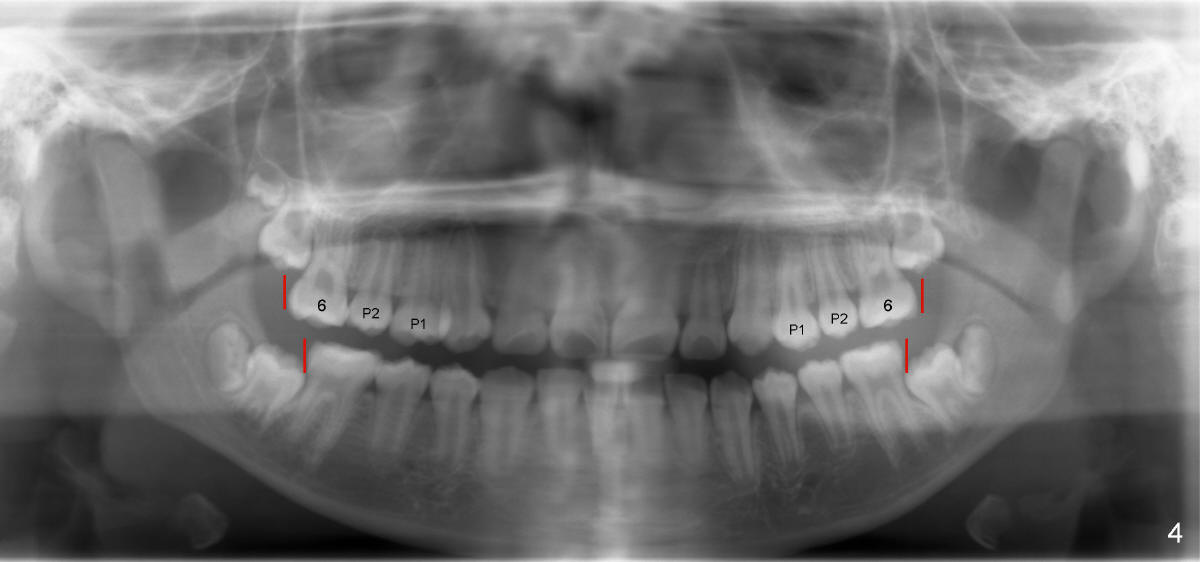



 |
|
 |
 |
 |
|
Prevention of Severe Tooth Misalignment
When Kevin first came to our office three to four years ago, he was eight years old. His upper left tooth alignment had been quite messed up (Fig.1). It might get worse if no step was to be taken immediately. Two of baby molar teeth on the top left (right side of Fig.1) were gone prematurely (M1, M2). One of the corresponding permanent premolar teeth (P1) had come down a little too early with backward shift (-->), while the permanent molar (6) had shifted forward (<--). There would be not enough space for the 2nd premolar (P2) to come down. Another way to tell that the upper left permanent molar had moved forward is that the back of it is almost at the same as that of the lower molar (compare two red lines). The two red lines on the right of the patient are not the same, which is normal.
What we were going to do is to use a space regainer (Fig.2 (model) white <, spring) to move the permanent molar backward (long arrow).
When the upper left first premolar tooth comes out completely (Fig.3: P1), a different type of space regainer is used to continue pushing the permanent molar backward (--->), while move the premolar forward (<----). When Fig.3 was taken, the 2nd premolar (P2) was normally erupting with enough space that had been created.
Step by step, Kevin's tooth alignment turns out to be perfect (Fig.4). For example, the position of red lines on both sides are normal. Early simple space management can avoid complicated braces later on.
Xin Wei, DDS, PhD, MS 1st edition 07/16/2013, last revision 07/16/2013